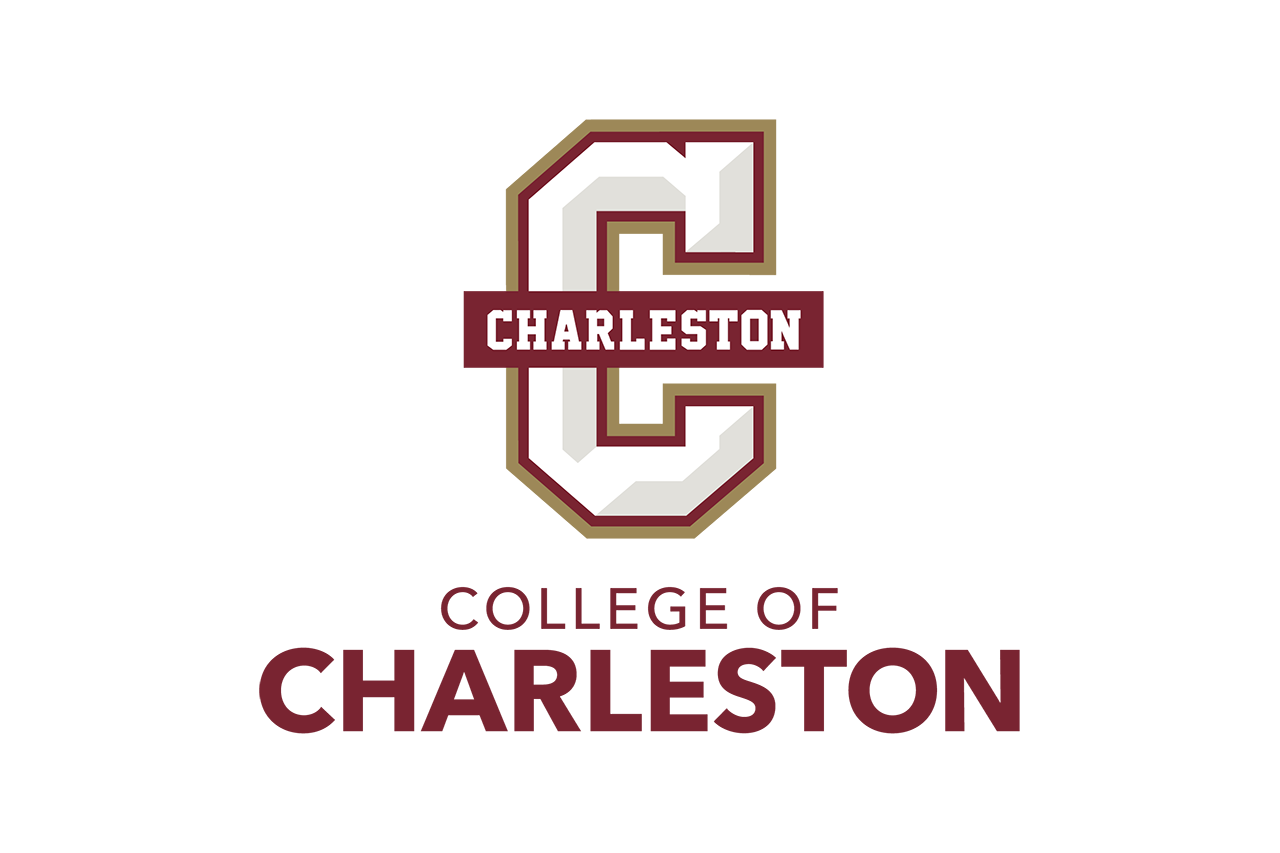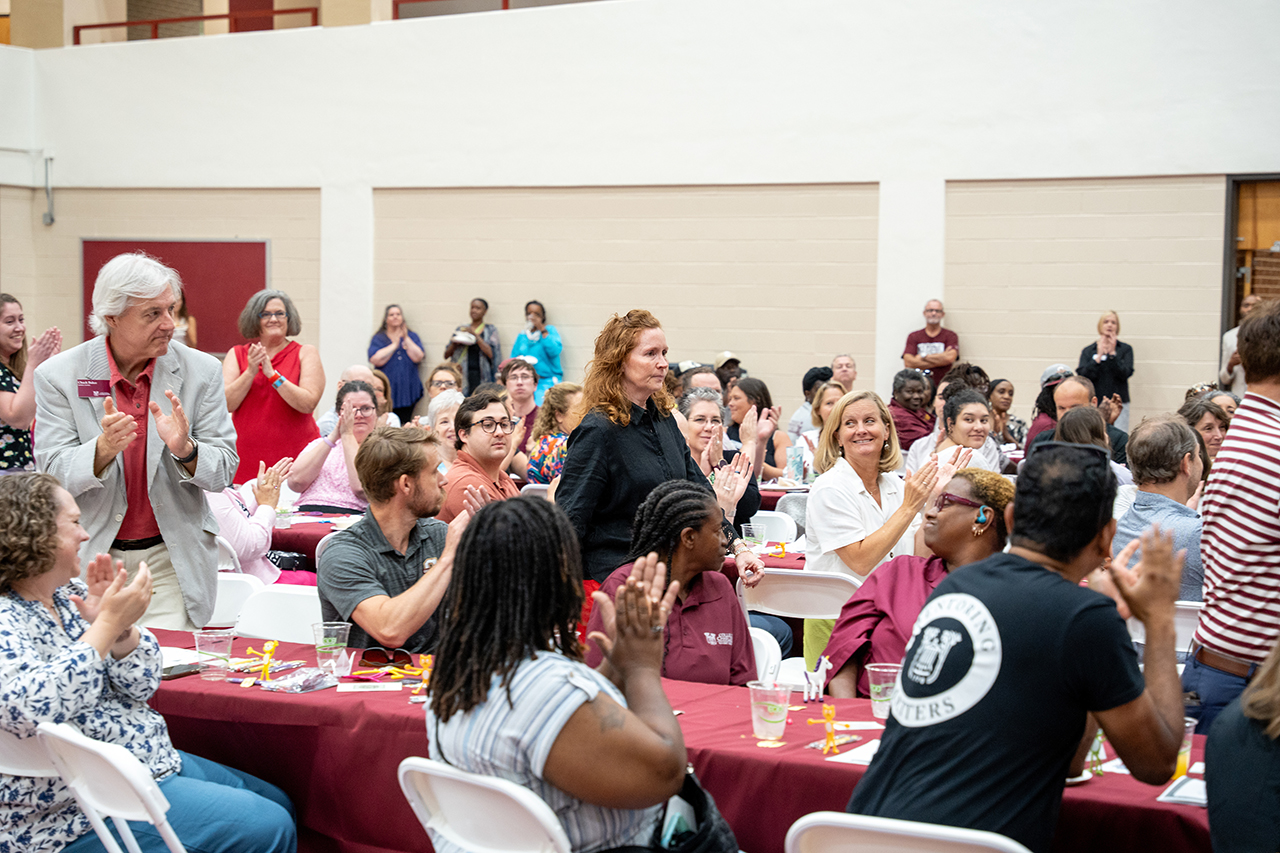CofC Alumnus Handles Public Affairs in Baltimore Bridge Collapse
Dylan Burnell '21, a Charleston District public affairs specialist for the U.S. Army Corps of Engineers, spent 33 days handling media relations at the site of the Francis Scott Key Bridge collapse in Baltimore, Maryland. Check out his photography!
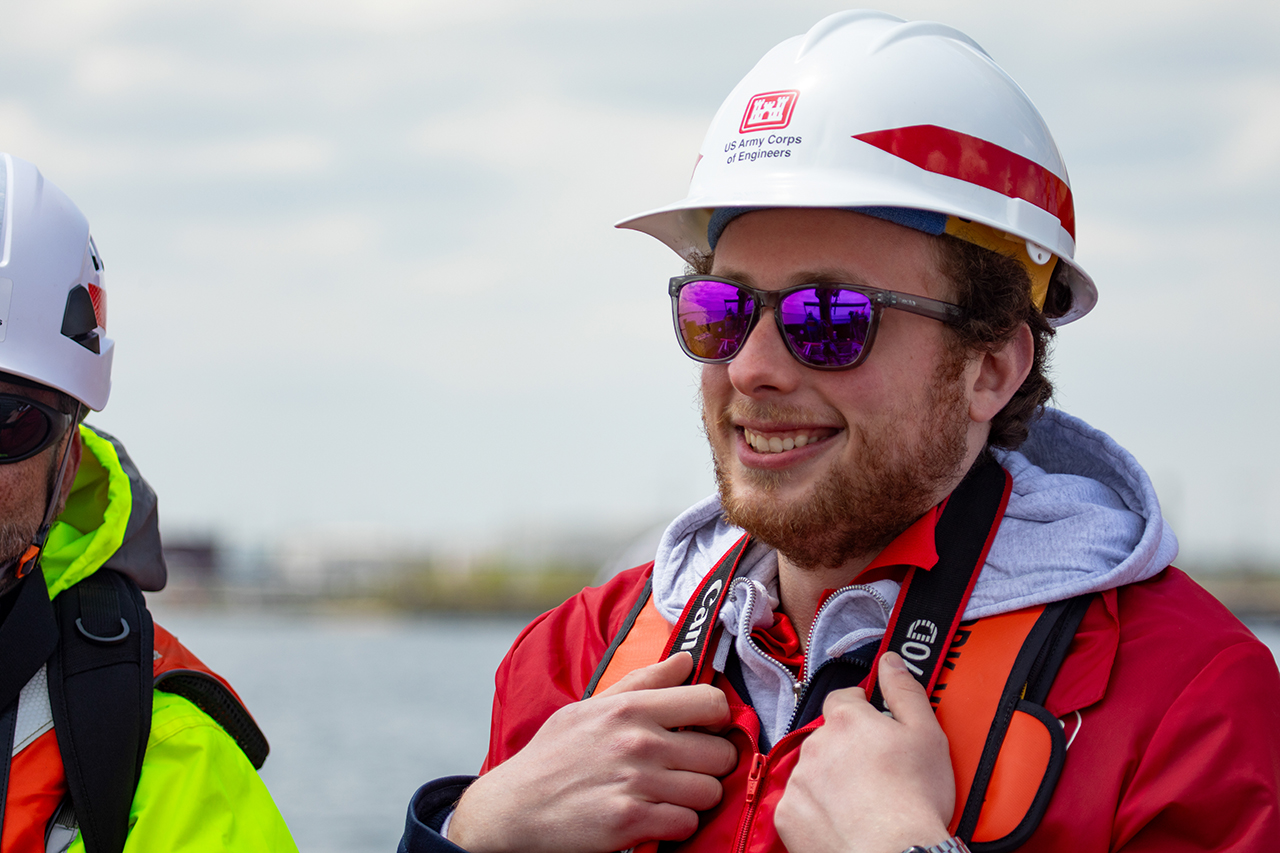
Photos courtesy of Dylan Burnell, U.S. Army Corps of Engineers Charleston District
“It looks like a movie set, like Tom Cruise should be jumping from one end to the other. It doesn’t look real.”
That’s how Dylan Burnell ’21, a Charleston District public affairs specialist for the U.S. Army Corps of Engineers, describes the site of the Francis Scott Key Bridge collapse in Baltimore, Maryland, back in March.
“It’s breathtaking. The scale and the violence of the destruction was really overwhelming,” he adds, recalling his reaction to seeing the 50,000 tons of steel that had crumbled over the Dali container ship. “We all just kind of took a moment for ourselves to look at it and be like, Wow, this is unbelievable.”
Burnell never expected to trade sunny, 80-degree Charleston for a month in foggy, 40-degree Baltimore. In the wake of the collapse, he was busy handling the PR side of local projects, like the renourishment efforts on Folly Beach and the $1.3 billion storm surge barrier around the peninsula.
But two days after reading about the bridge collapse in the news, Burnell got a call from headquarters telling him he was being deployed to Baltimore.
“I was like, ‘OK, what am I going to be doing? What’s my role there?’ And they’re like, ‘You don’t need to worry about that right now. You need to worry about getting on a plane and getting to Baltimore. That’s your only worry right now.’ And so that’s what I did. I got on a plane and went to Baltimore,” recalls the Narragansett, Rhode Island, native. “It all happened so fast.”
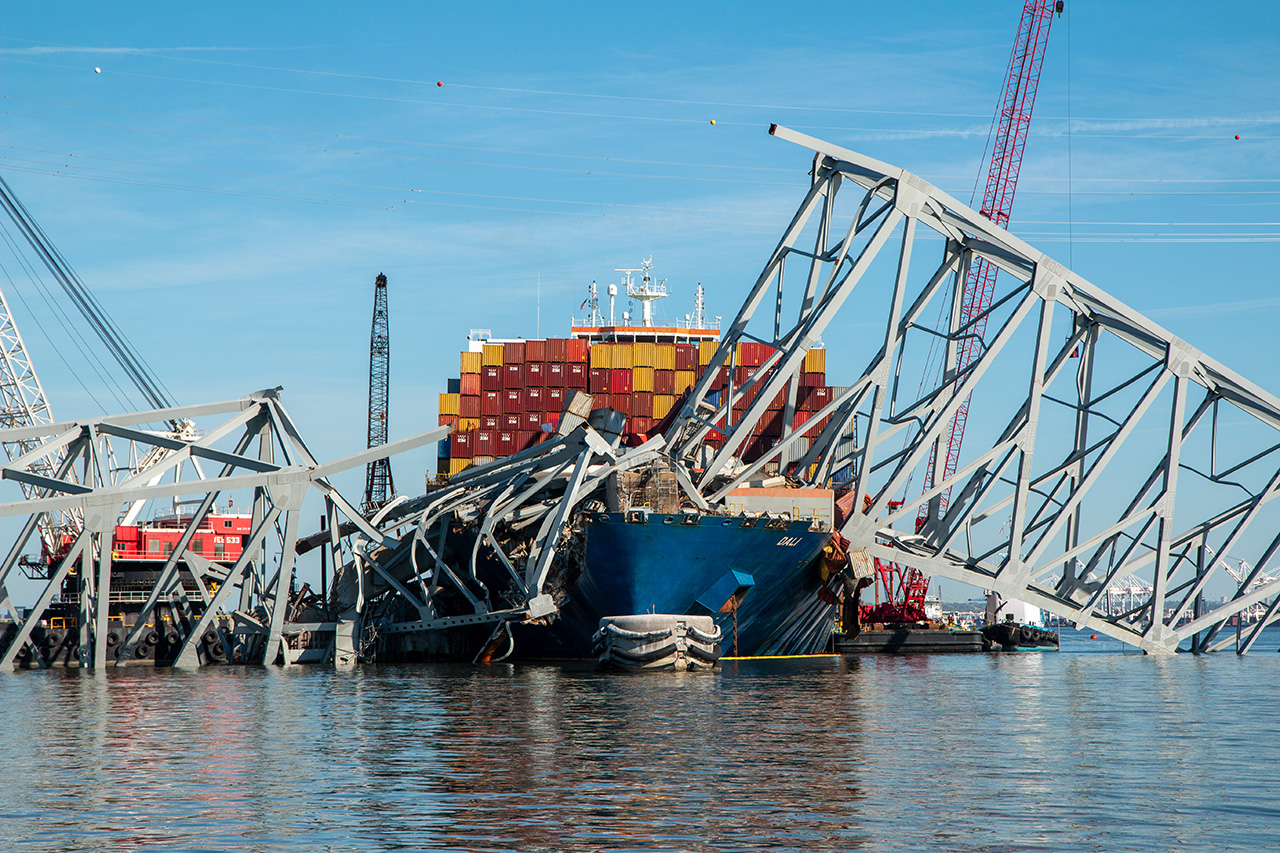
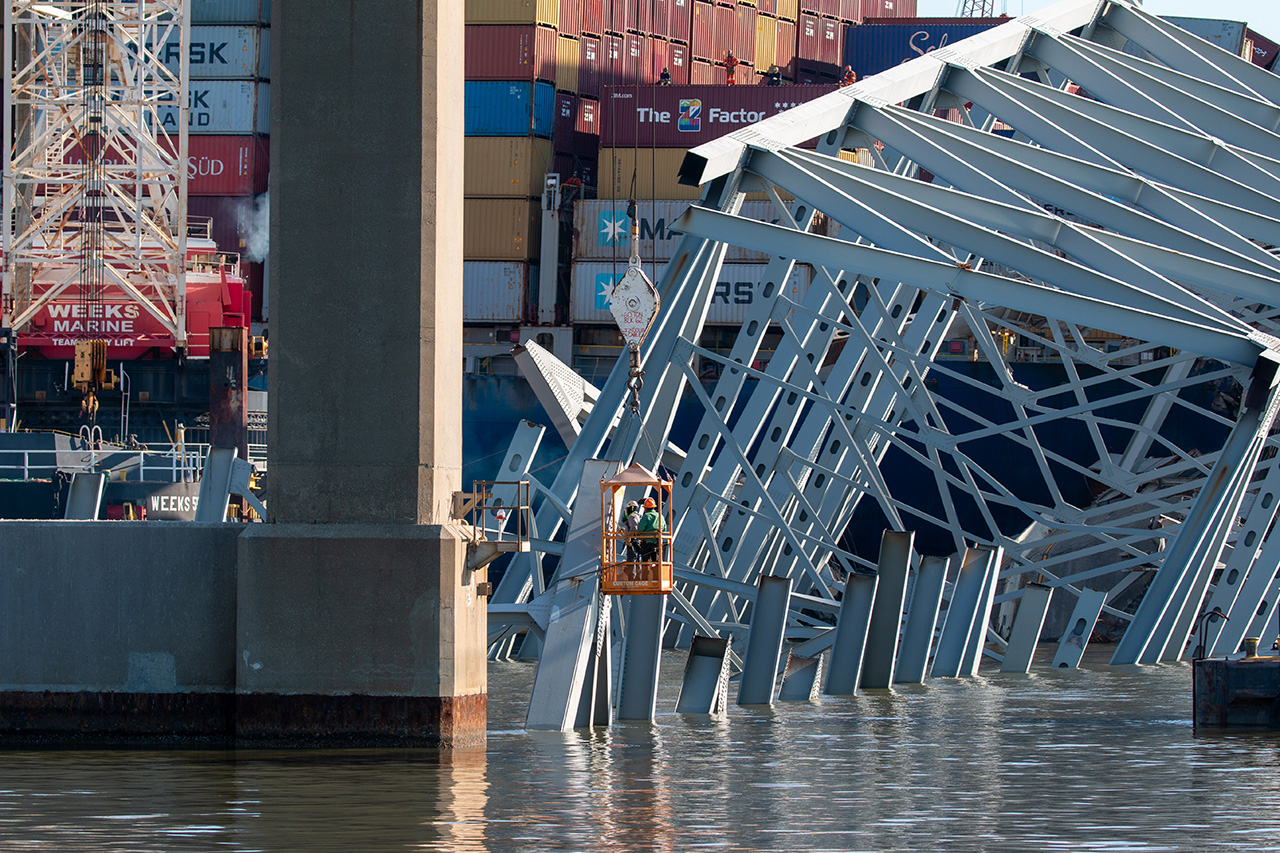
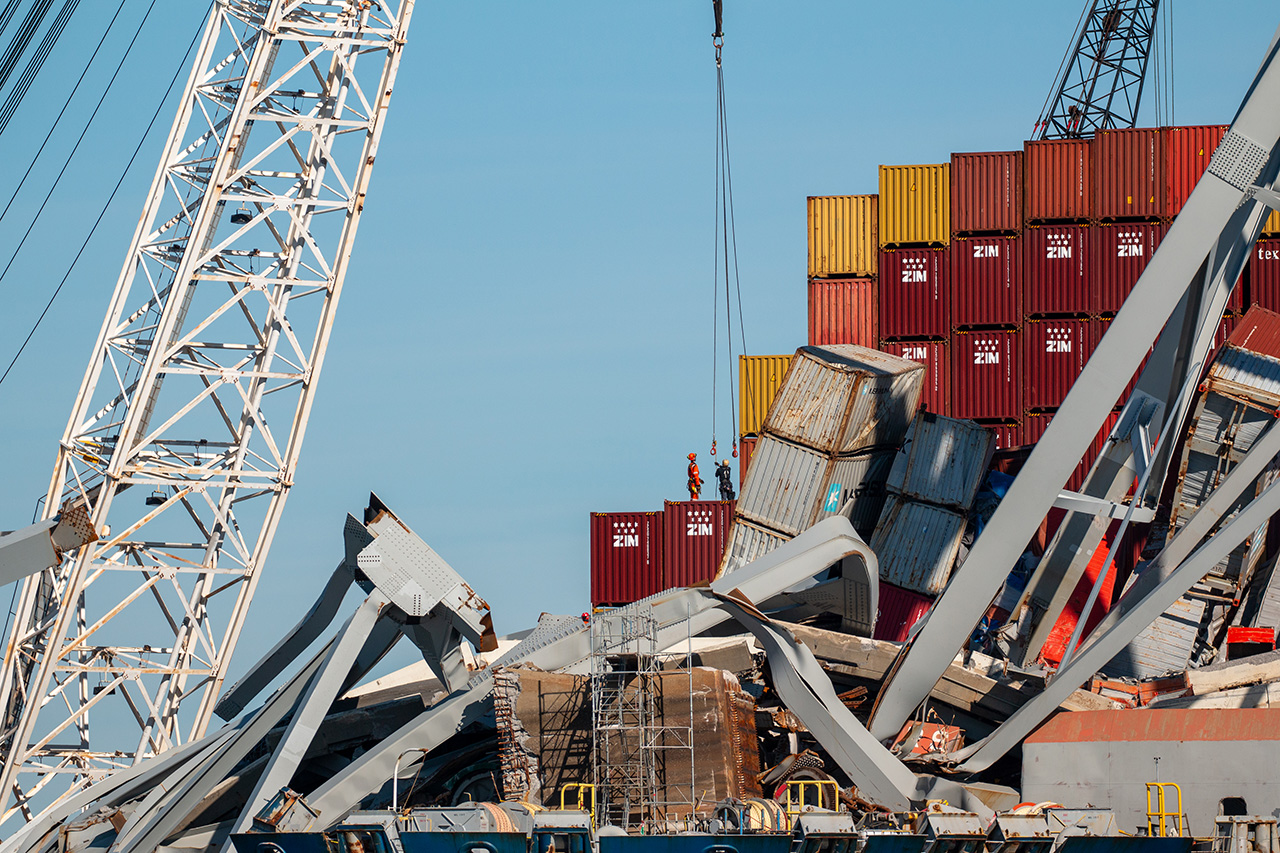
The operators of the U.S. Army Corps of Engineers, Baltimore District survey vessel CATLETT conduct survey operations in support of the joint response to the Francis Scott Key Bridge mission in Baltimore, Maryland, April 16, 2024. An estimated 50,000 tons of concrete and steel collapsed into the Patapsco River from Baltimore’s Francis Scott Key Bridge. The Key Bridge Response 2024 Unified Command priorities are to ensure the safety of the public and first responders, account for missing persons, safely restore transportation infrastructure and commerce, protect the environment and support the investigation of the incident. (Key Bridge Response 2024 Unified Command photo by U.S. Army Corps of Engineers Public Affairs Specialist Dylan Burnell)
While dealing with any major disaster is unpredictable and unnerving, this was especially the case for Burnell as he prepared for his 33-day deployment to Baltimore. This disaster would be his first.
“The types of disasters we normally deal with in the Charleston District are hurricanes. This was a whole different ballgame. I was so nervous before I went,” Burnell admits. “I was afraid I would mess it up, that I would say something wrong to some reporter, and it would all come crumbling down.”
Turns out, Burnell didn’t have much time to dwell on being anxious. Upon his arrival, he was immediately thrown into the action – and he quickly found out what being the public affairs guy during a national emergency meant.
“Someone from the governor’s office came over,” Burnell recounts of his first day on the job. “They said, ‘Hey, ABC World News Tonight has a reporter and cameraman who need to go out to see the site. Can we arrange a tour?’ The two guys sitting in front of me turned around, looked at me and said, ‘That’s your job.’ And I was like, ‘Got it.’ So, I scrambled and got us on one of the boats.”
It was on this trip through the foggy, rainy Baltimore shipping channel that the gravity of the disaster finally sunk in for Burnell.
“Through the fog, all of a sudden, this container ship and bridge just emerge like a movie. Everybody’s standing out on the deck looking at it,” he remembers. “It’s unlike anything you’ll ever see in your life. I mean, the pictures don’t do it justice.”
That trip was only the beginning. Burnell also worked with the BBC, Reuters, the Associated Press, The New York Times, ABC, FOX, CNN – “all the big names,” he says. “A bunch of these people that I’ve seen on TV, I was working with.”
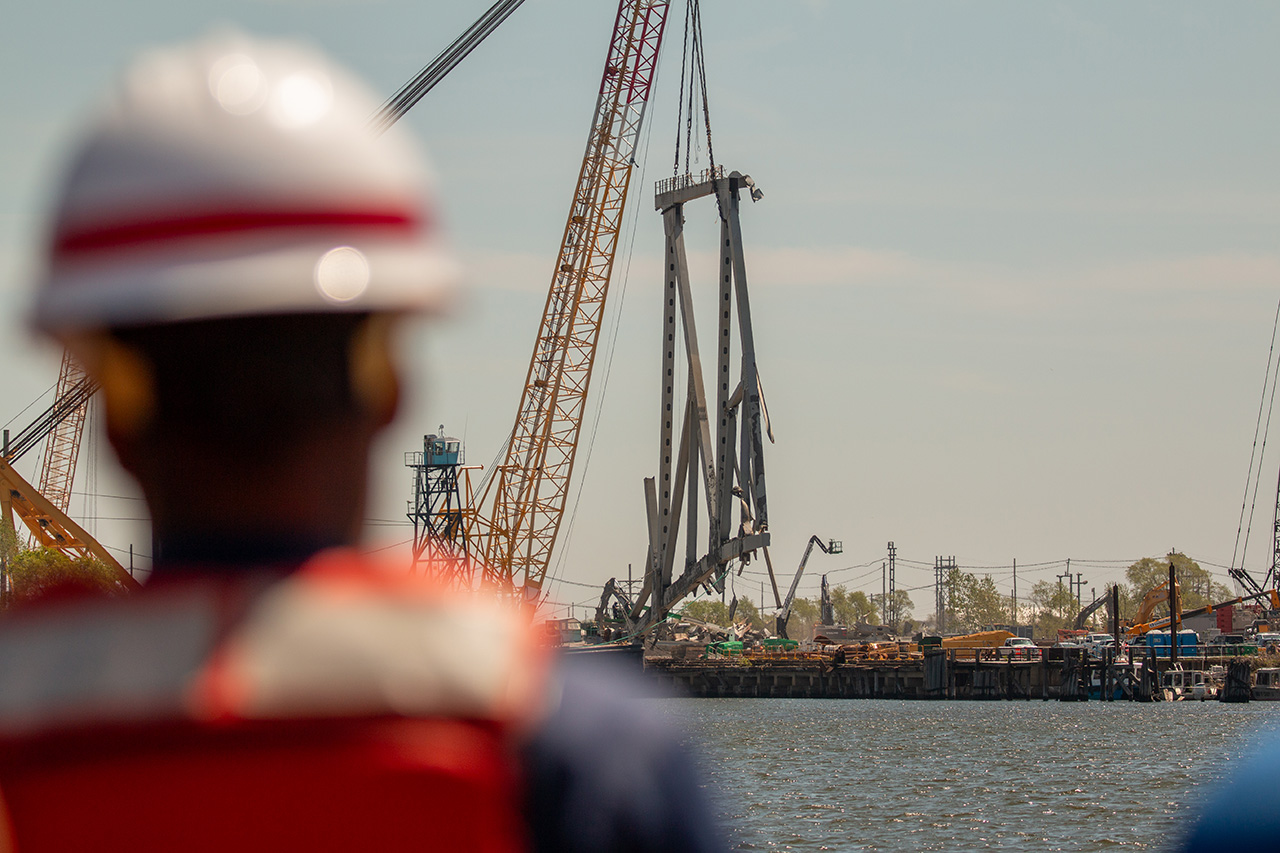
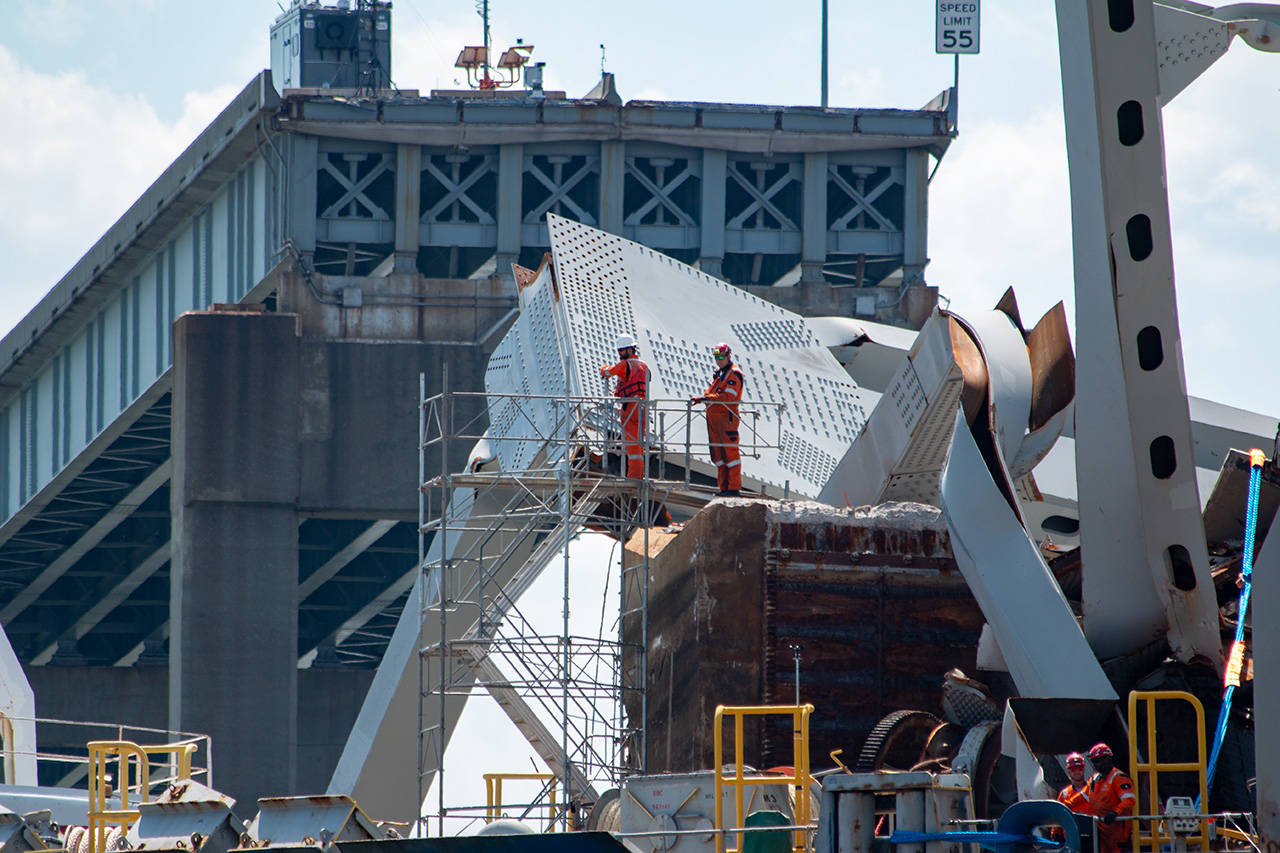
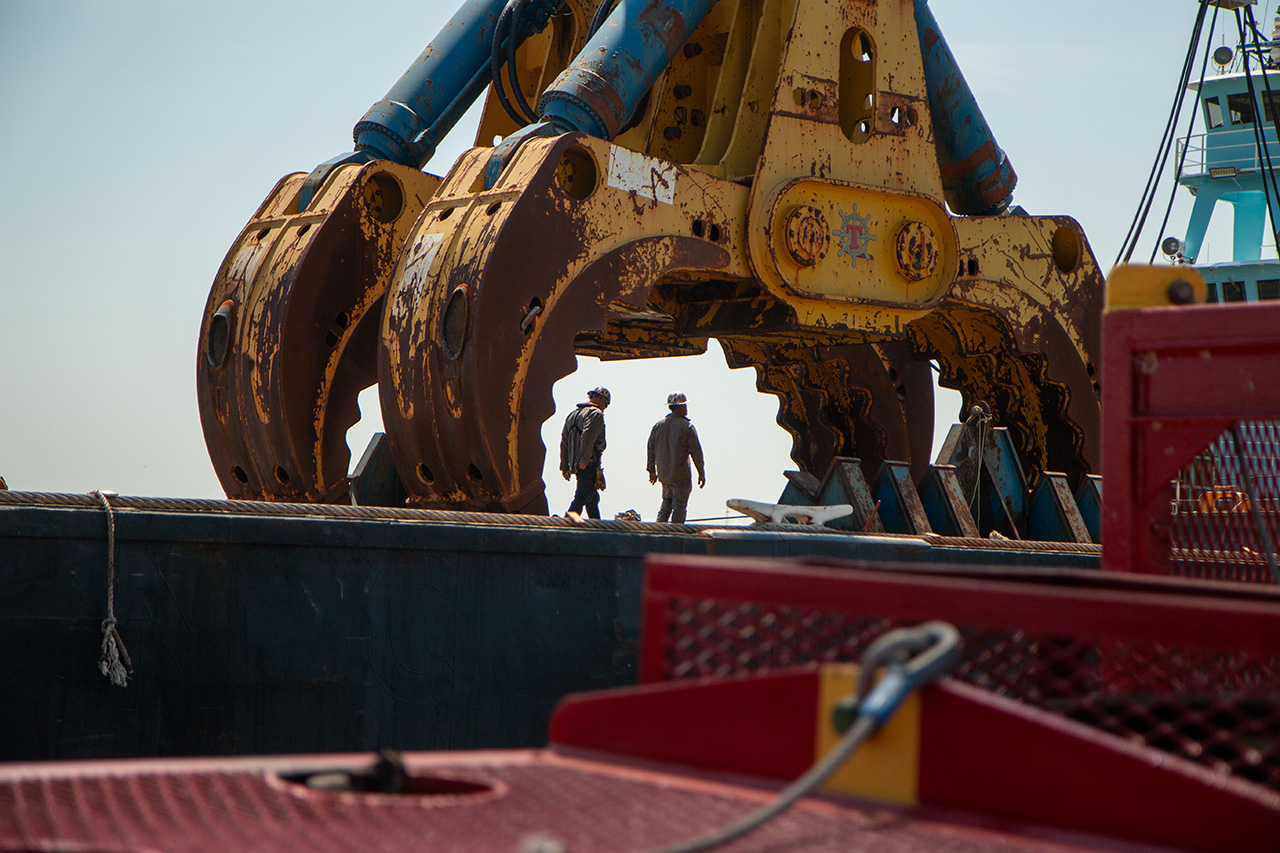
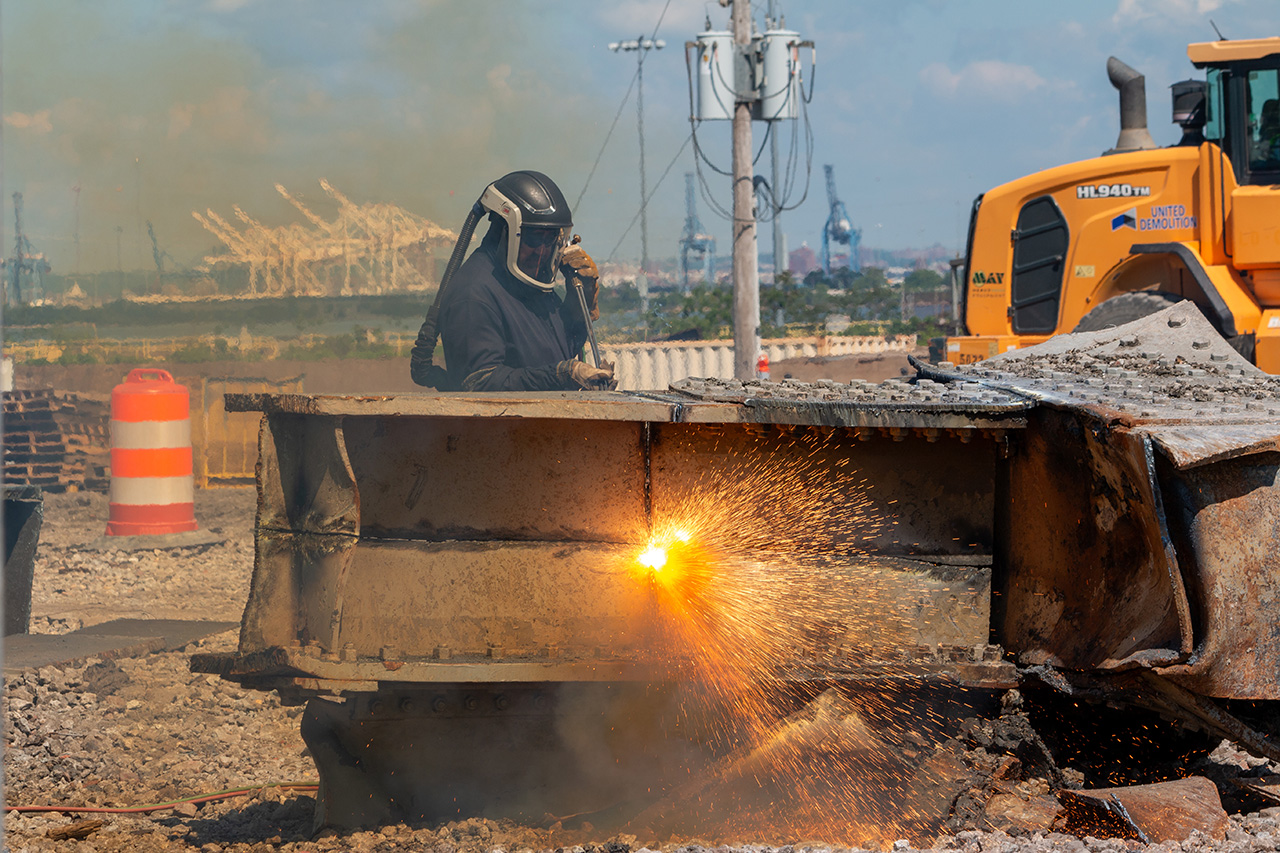
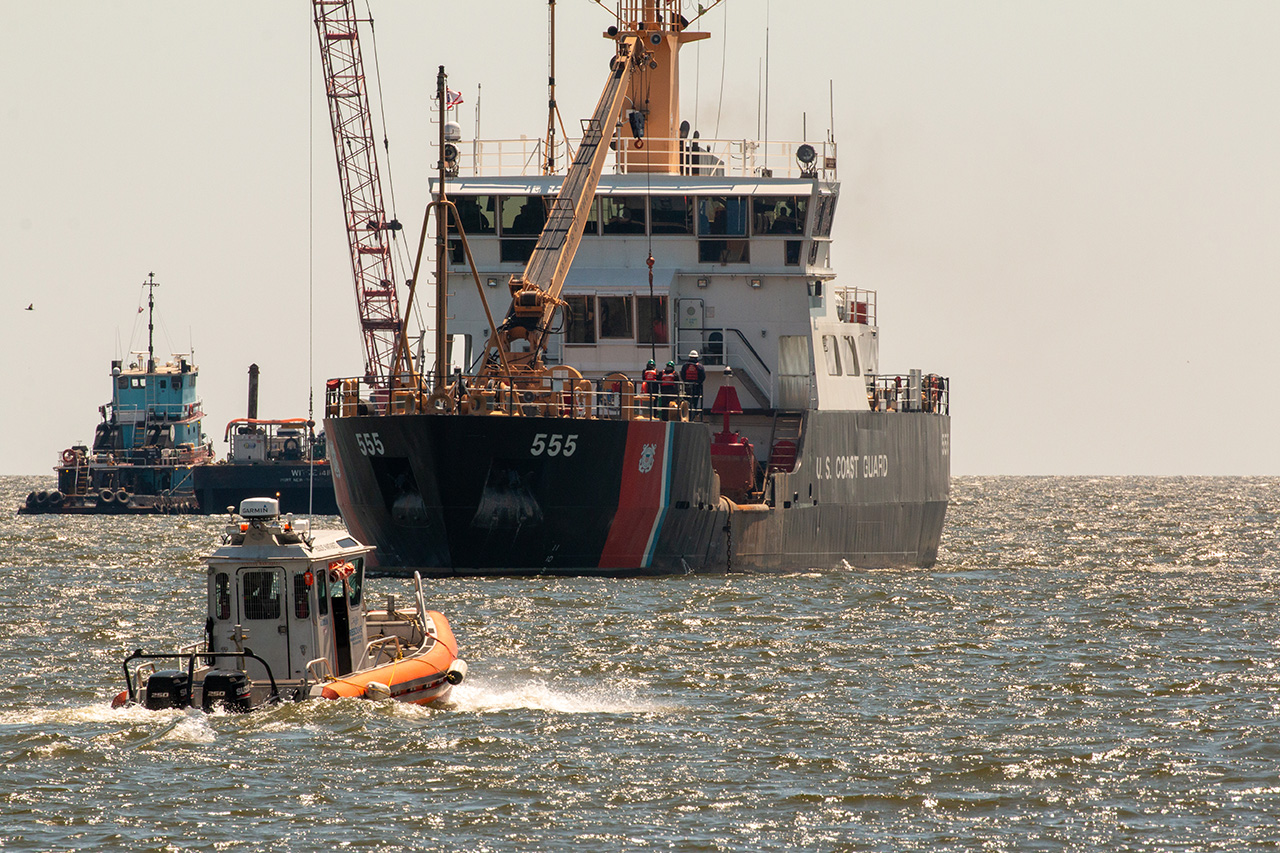
Above right and left: Salvage crews continue work clearing the wreckage of the Francis Scott Key Bridge from the Patapsco River in Baltimore, Maryland, on April 23, 2024. Above center: Salvors prepare a heavy lift sheerleg crane ship, the Chesapeake 1000 to use the HSWC500-1000 heavy duty hydraulic salvage grab to continue wreckage removal, April 28, 2024, during the Key Bridge Response 2024. (Key Bridge Response 2024 Unified Command photo by U.S. Army Corps of Engineers Public Affairs Specialist Dylan Burnell)
But Burnell didn’t stay starstruck for long.
“What I’ve learned is that they’re all just people,” he says. “The bigger outlets ask harder questions and may want more, but at the end of the day, these are all just people here to do their job. And they’re happy that we are putting them on boats to see the site up close. They were all so receptive.”
Receptive is an understatement. The first two weeks of Burnell’s deployment were packed with reporters and interviews from 150–200 different media outlets.
“You know, nobody ever told us to be as open to the media as possible. Nobody ever told us, ‘Don’t be open.’ Nobody ever gave us any guidance on that,” says Burnell. “So, our thinking was, If there’s no reason to tell the media no, then let’s bring them out there. Let’s bring every single one that asks to go out there.”
But after that initial two-week period when the collapse was all over the news, attention from the major outlets dropped off. Burnell and his team quickly pivoted to a new strategy that targeted social media influencers and Hispanic news outlets to ensure the story stayed afloat.
“We started pushing to the outlets, reaching out to them to cover aspects of the story that were not being covered,” Burnell says, adding that the six victims of the bridge collapse were immigrants from El Salvador, Mexico, Guatemala and Honduras – not the typical audience demographic of the major news outlets. “So we could have been doing all this work and missing the people that actually lost someone here.”
With this innovative thinking and tireless effort to push the story to diverse audiences, Burnell was satisfied with all that his team accomplished.
“One of the biggest things that our headquarters tries to always push is to tell the story. Don’t just tell people the news, tell them the story. And we did. We told that story. It was very successful in the sense of positive coverage, positive sentiment, good numbers on social and all the great relationships that we built with reporters,” Burnell says. “In all the exhaustion, I wasn’t doing this for me. I was there to do a job, and we got that job done.”
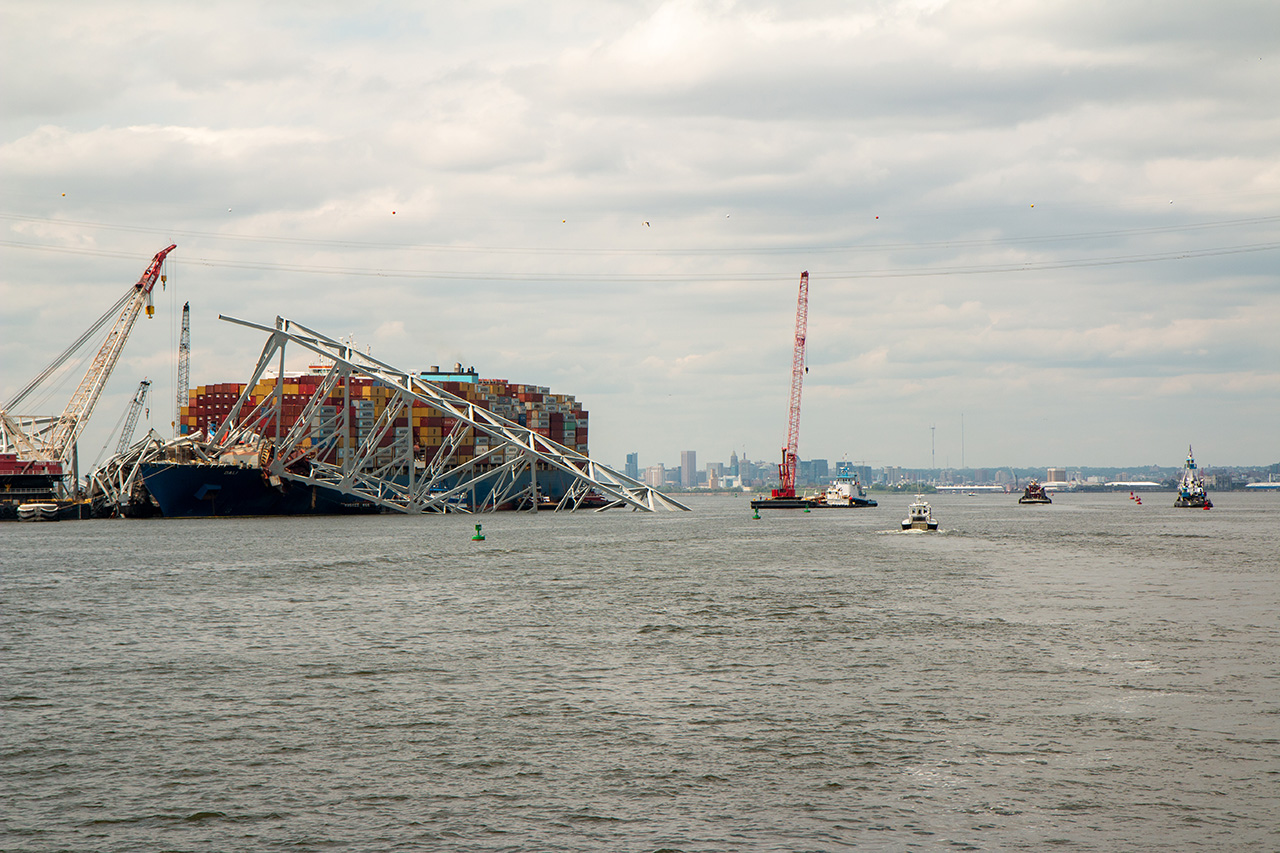
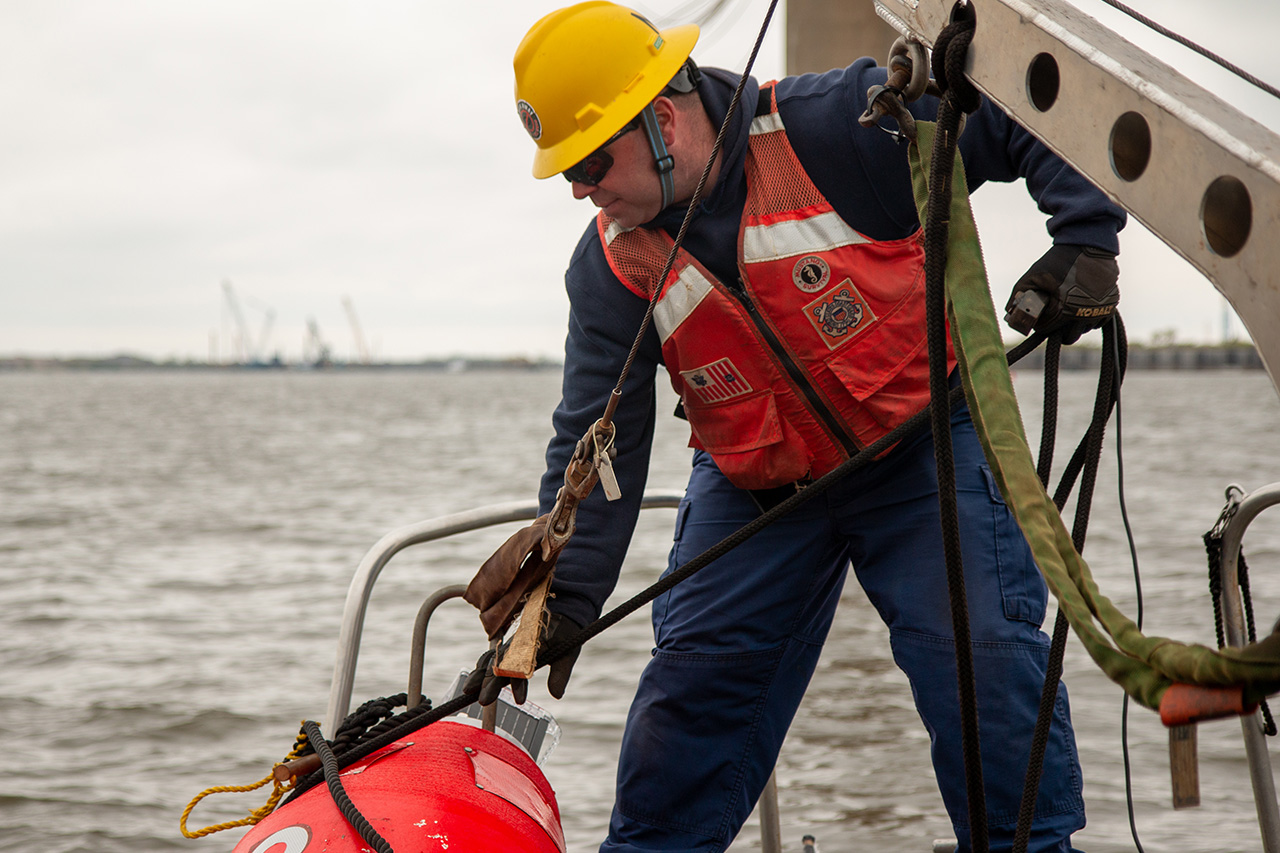
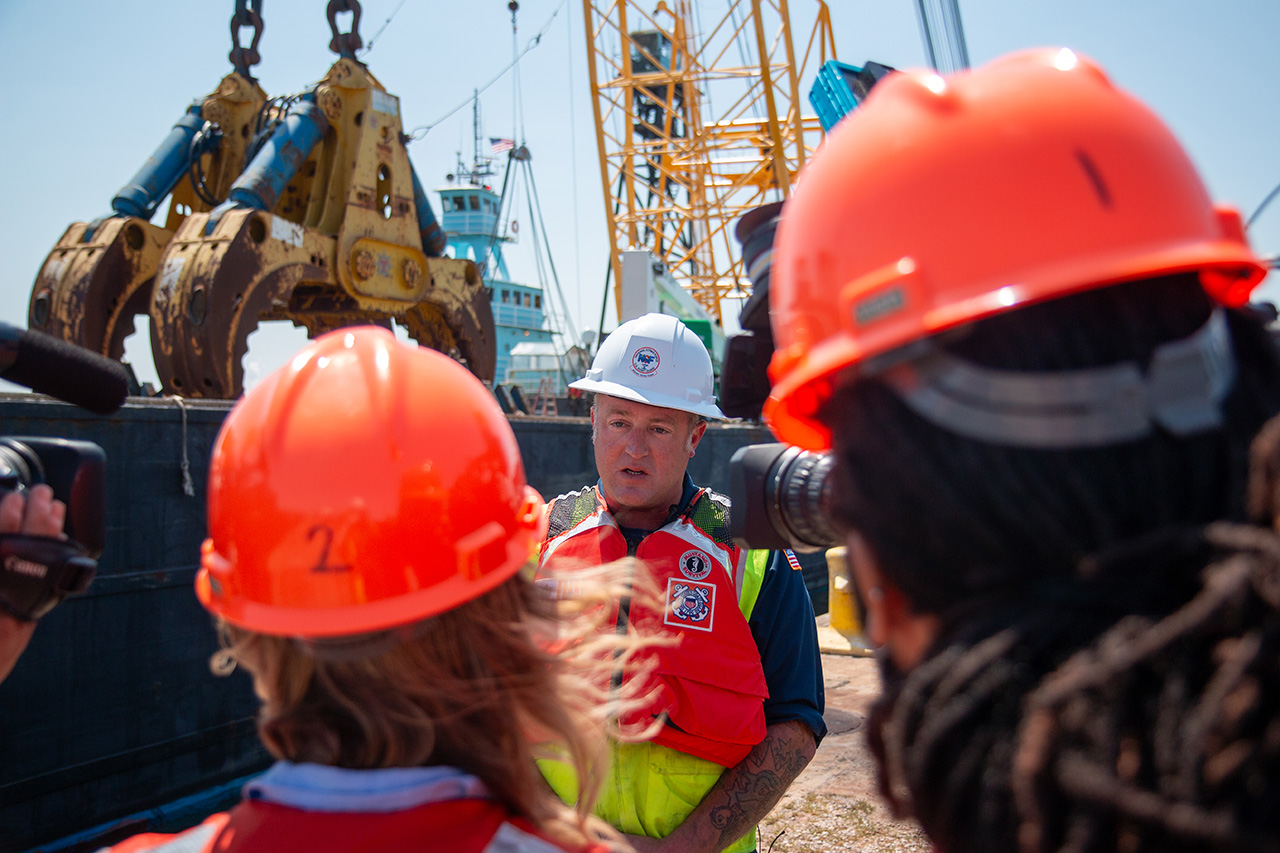
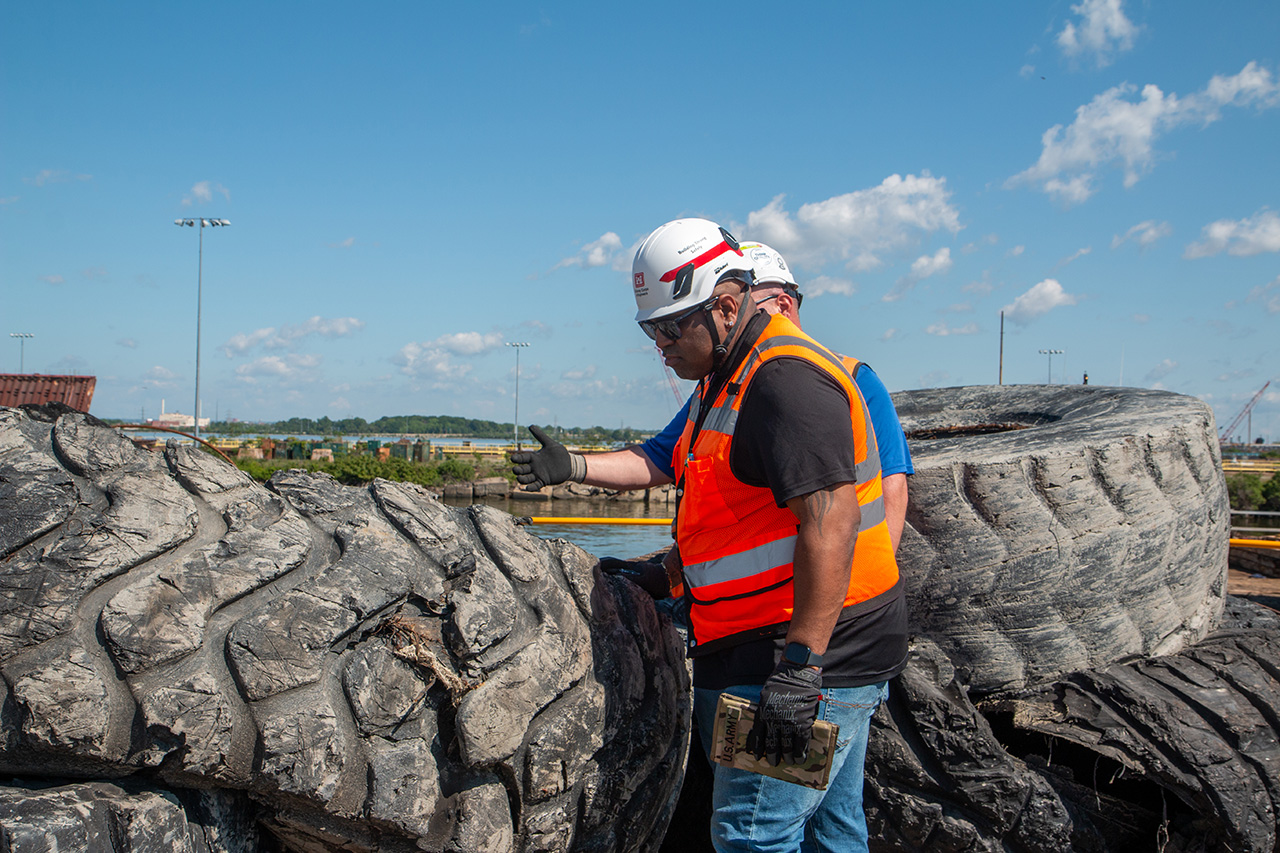
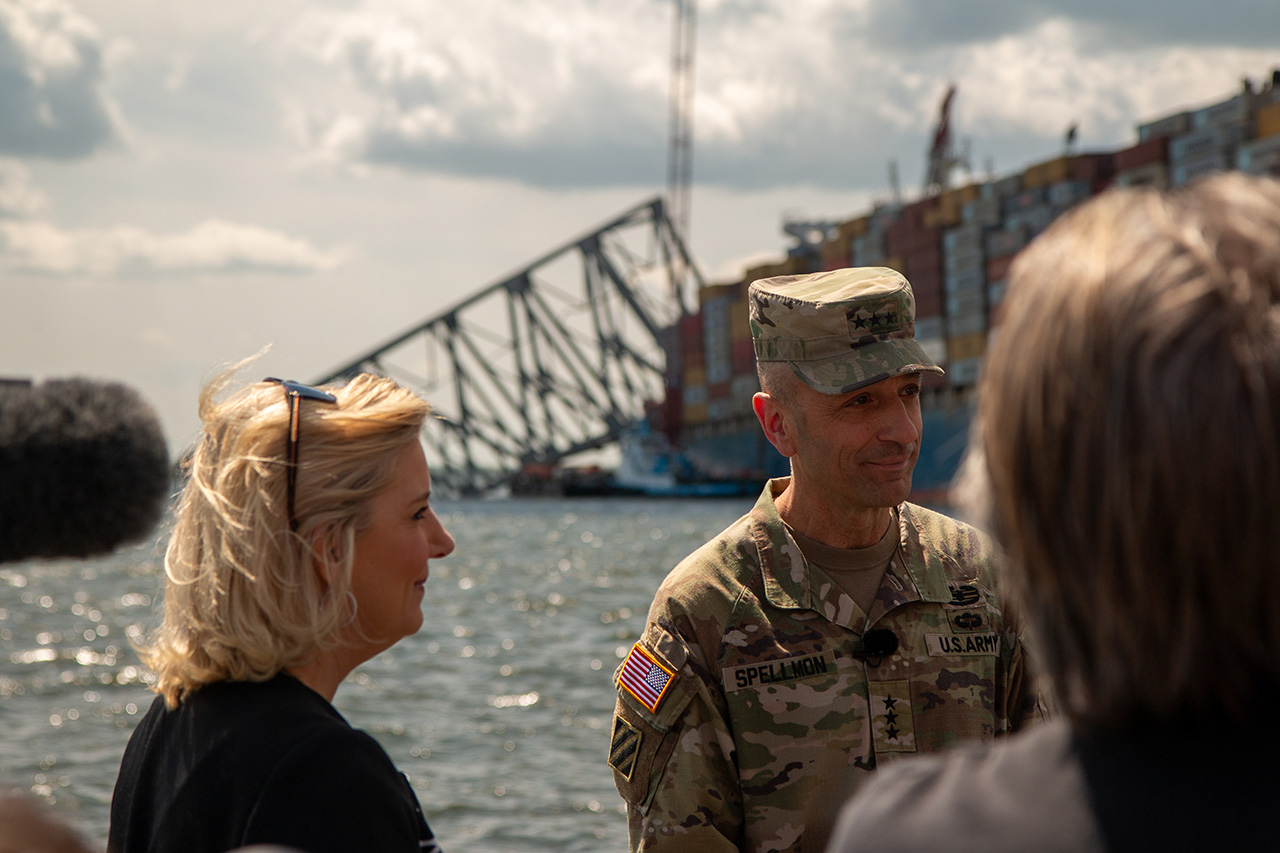
Above, clockwise from top left: Unified Command opens Limited Access Channel to commercial vessels following the collapse of the Key Bridge; Chief Warrant Officer Rick Baynor, U.S. Coast Guard Naval Engineer, speaks with members of the media during a tour of the Chesapeake 1000 and HSWC500-1000 heavy duty hydraulic salvage grab at Sparrows Point, Maryland; Kodell Harris, U.S. Army Corps of Engineers Baltimore District safety and occupational health specialist, conducts a site visit of the lay-down site at Sparrows Point, Maryland; U.S. Secretary of the Army Christine Wormuth joins U.S. Army Corps of Engineers Commanding General and Chief of Engineers Lt. Gen. Scott Spellmon, U.S. Army Corps of Engineers Baltimore District Commander Col. Estee S. Pinchasin and representatives from the Unified Command for a site visit; members of the U.S. Coast Guard deploy buoys marking the Fort Carroll temporary alternate channel near the wreckage. (Key Bridge Response 2024 Unified Command photo by U.S. Army Corps of Engineers Public Affairs Specialist Dylan Burnell)
While nothing could have quite prepared him for a national crisis, Burnell believes that his College of Charleston degree in hospitality was vital to successfully executing his responsibilities in Baltimore.
“Finding ways to get reporters on boats to tour the sights objectively is just like finding ways to put people in hotel rooms,” Burnell explains. “It’s resource allocation.”
Besides the logistical side of his hospitality and tourism management degree, the social side also proved crucial.
“When you’re up there and you’re with all these reporters, you have a lot of time where we’re not out at the site yet. So, being able to talk to them and be personal with them – to form this connection, this relationship with them – was really important. And I wouldn’t have gotten that had I not gone to CofC, taken the classes that I did in hospitality and had the great professors that I had,” Burnell says, noting that two of his favorite professors were Robert Frash and John Crotts.
After a grueling month of 12-hour-plus workdays and no time off, Burnell returned to his typical 8-hours-a-day, 5-days-a-week routine in Charleston with newfound confidence – in himself and in his ability to handle media relations.
“When the Key Bridge collapsed, people lost their lives. We had to handle a lot of really tough questions about it during the response and that teaches you a lot,” Burnell explains. “When I returned and got back to more routine media queries about things like the Folly Beach renourishment, I was able to handle them with much more confidence and ease based on what I had learned in Baltimore.”
While his deployment was arduous and exhausting, Burnell wouldn’t change it for the world.
“It was hard, it was tiring, it just beats you down, but, at the end, it was rewarding,” Burnell says, noting that it was a lot like summer camp: “You know when you leave camp at the end of summer and you’re like, Man, I wish I could stay with these people all the time! When I left, I was like, This was such a great group of people – I want to stay with them!
“It was an amazing experience,” he adds, “and I couldn’t be more grateful for the opportunity.”

